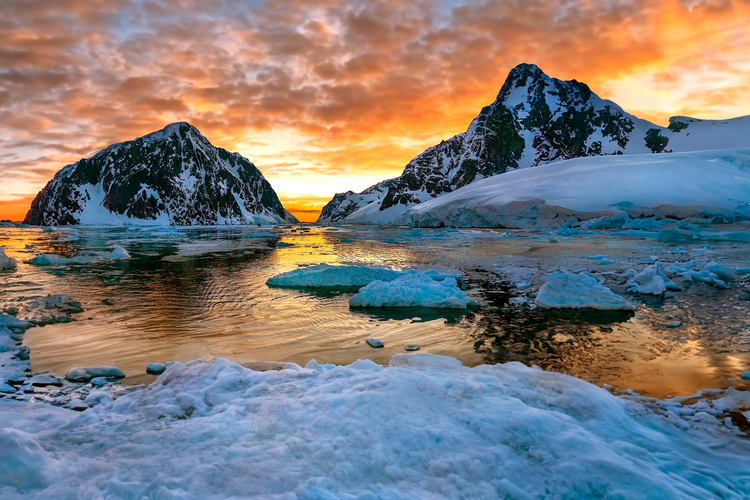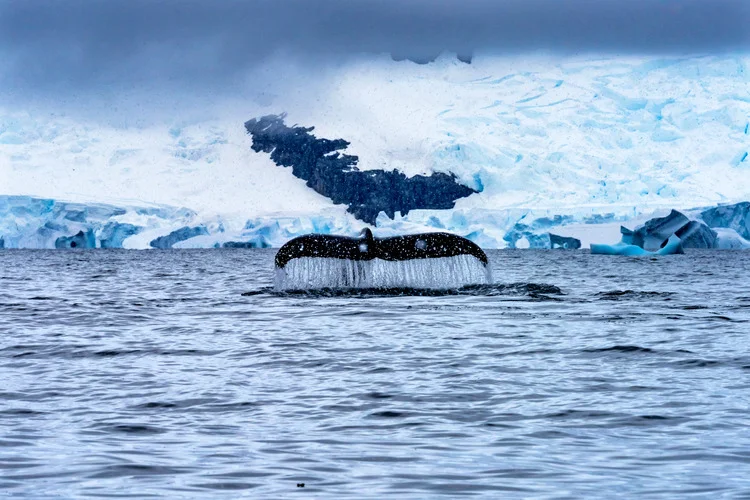
Discover more about the unique governance of Antarctica… and why it is still unowned despite seven countries making claims on its land
By
It’s roughly the size of the United States and Mexico combined. Five times the size of Australia. It stretches over an area of land more than 14 million square kilometres. This is Antarctica, a continent whose sprawling expanse is, rather surprisingly, owned by no single country.
Instead of being ruled by one nation, Antarctica is governed by a group of countries bound together by the Antarctic Treaty, established in 1959 to ensure the continent is used for peaceful purposes.
Enjoying this article? Check out our related reads:
It’s not a stretch to say there’s a rather complicated history of governance in the icy poles and a unique system in place to protect the continent today.
Read on to find out exactly how it functions, and which countries have a keen interest in the continent…
What is the Antarctic Treaty?
A total of 12 countries came together in 1959 to sign the Antarctic Treaty – Argentina, Australia, Belgium, Chile, France, Japan, New Zealand, Norway, South Africa, United Kingdom, United States, and USSR – who all at the time had active scientists in and around the continent.
Since then, dozens more nations have joined the treaty – which remains enforced indefinitely – bringing the total number of participating nations to 58.

Among its stipulations, some of the most significant provisions within the treaty are to use Antarctica for peaceful purposes only, to share scientific observations and results from the continent freely between countries, and to allow scientific investigations to be carried out. Essentially, the treaty also renders Antarctica a demilitarised zone, prohibiting all military activity (except that in support of science) along with banning nuclear explosions and the disposal of nuclear waste.
The zone covered by the Antarctic Treaty is the area south of 60° South Latitude. This includes all ice shelves and islands.
It’s often lauded as one of the most successful international agreements, with differences set aside in favour of protecting one of the Earth’s most important landscapes.
But things weren’t always this collaborative. Before the treaty was established, countries were eager to make their mark on the barren and icy land. Seven territorial claims to parts of Antarctica were made by 1959, all of which still exist today in a rather complex way.
Who claims Antarctica?
The UK was the first country to formalise a claim to the Antarctic back in 1908. Following that, six other countries made formal claims to territory on the continent: New Zealand (1923), France (1924), Norway (1929), Australia (1933), Chile (1940) and Argentina (1942).
All these claims use lines of longitude to define their boundaries, which on a map divide Antarctica up into wedge-like shapes, much like a pie.
However, there is one ‘slice of the pie’, so to speak, which remains entirely unclaimed – and is the largest unclaimed region in the entire world: Marie Byrd Land. With an area of 1.61 million square km, the region borders the South Pacific Ocean and stretches from the Ross Sea to Ellsworth Land. Even though it is unclaimed, it isn’t entirely desolate. A US research base, Byrd Station, is located there with 20-30 people working on the base during the summer months.
Other than Marie Byrd Island, though, the rest of Antarctica has been subject to various claims from countries. A range of reasons explain why nations were so interested in the continent back in the 20th century, from a desire to explore the natural resources on the continent to gaining a geopolitical advantage.
The UK’s claim comprises the sector of the Antarctic south of latitude 60 degrees South, between longitude 20 degrees West and 80 degrees West. In this area, the UK have three scientific stations, a research ship and an ice-patrol ship, HMS Protector, and manage a historical base at Pork Lockroy. Most of the area which the UK claims is subject to competing and overlapping claims by Argentina and Chile.
The largest of all claims is that of Australia’s – 5.9 million square km – equivalent to 42 per cent of the entire continent. For comparison, Argentina’s claim to the continent – known as the Argentine Antarctic Sector – is almost 1.5 million square km in size. Meanwhile, Chile’s Antarctic territory is around 1.25 million square km.
Today, all claims are held in abeyance, meaning they exist but are neither recognised nor disputed internationally. This is as confusing as it sounds, and opens up possibilities for future re-interpretation of what these claims may mean in the future – especially so since none of the seven countries have renounced them.
Will Antarctica be owned?
The year is 2048: marking the time at which review conferences can come into play within the Antarctic Treaty. This means any member party can call a meeting to discuss the Antarctic Treaty and how it is operating. A common misconception suggests that at this point, the entire treaty becomes defunct, and unregulated human activities, like mining, can plough through the continent.

In the context of territory claims, concerns may also arise over potential reviews that could transform ambiguous claims of land into something more concrete for the seven countries mentioned. Land could be divided up amongst countries. And considering the recent attention Antarctica has been drawing for its likely resource-rich grounds for commercial mining, turning a claim into reality in the continent’s territory could certainly be of future economic interest.
But Antarctica suddenly becoming owned and divided up into territories is not necessarily a certainty for the future. It is true that more dialogue can occur from 2048, but any modifications to the treaty – or a scenario in which claims become legitimate rights to Antarctic territory – would still need to be agreed by 75 per cent of the parties.
Since many of these territory claims are overlapping, like those between Argentina, Chile and the UK, this could likely further add complexity to potential discussions.
Ultimately, the Antarctic Treaty currently remains in place as a means to regulate activities on the continent and ensure it is a scientific and peaceful zone. It is, of course, impossible to predict the future and how the treaty may be adapted in the coming decades or centuries, but it is increasingly understood that navigating the governance of one of the Earth’s most unique landscapes is a complex undertaking.



